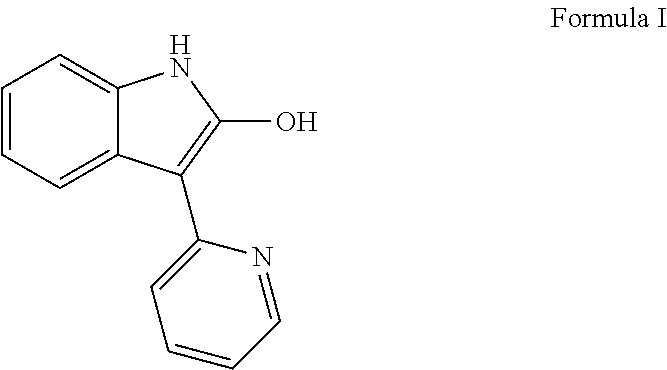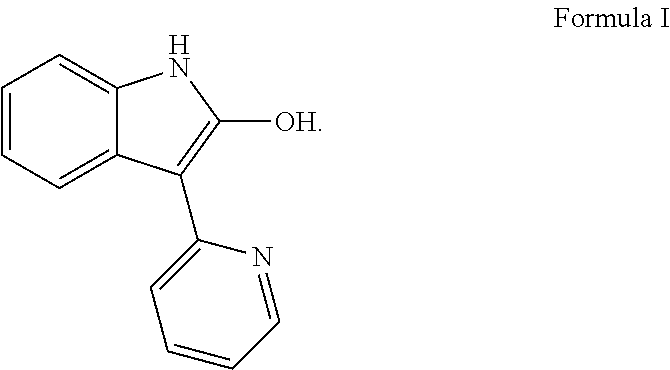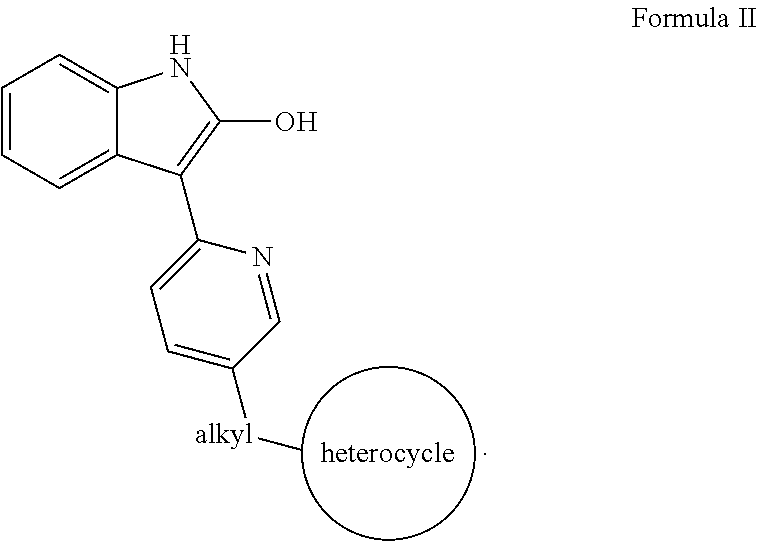Methods for controlled proliferation of stem cells / generating inner ear hair cells using 3-(pyridin-2-yl)-1H-indol-2-ol based compounds
a technology of stem cells and indol, which is applied in the direction of medical preparations, pharmaceutical delivery mechanisms, organic active ingredients, etc., can solve the problems of potential exhaustion of the stem cell pool, lack of hair cell capacity of the daughter cell, etc., and achieve the effect of reducing the activity of tgfbeta
- Summary
- Abstract
- Description
- Claims
- Application Information
AI Technical Summary
Benefits of technology
Problems solved by technology
Method used
Image
Examples
examples
Assay: Mouse Strains
[0192]Lgr5-EGFP-IRES-Cre-ER mice (Barker et al., 2007) are used to analyze the effects of small molecules on cochlear stem cell expansion.
[0193]Isolation of stem cells from the inner ear: All animal studies are conducted under an approved institutional protocol according to National Institutes of Health guidelines. For experiments with neonatal mice (postnatal days 1-3), the cochleae are dissected in HBSS and the organ of Corti are separated from the stria vascularis and the modiolus. The organs of Corti are then treated with Cell Recovery Solution (Corning) for 1 h to separate cochlear epithelium from the underlying mesenchyme. Epithelia are then collected and treated with TrypLE (Life Technologies) for 15-20 minutes at 37° C. Single cells obtained by mechanical trituration are filtered (40 μm) and suspended in Matrigel (Corning) for 3D culture.
Expansion of Lgr5-Positive Cells
[0194]Cells are cultured in a 1:1 mixture of DMEM and F12, supplemented with Glutamax (...
PUM
| Property | Measurement | Unit |
|---|---|---|
| diameter | aaaaa | aaaaa |
| field size | aaaaa | aaaaa |
| field size | aaaaa | aaaaa |
Abstract
Description
Claims
Application Information
 Login to View More
Login to View More - R&D
- Intellectual Property
- Life Sciences
- Materials
- Tech Scout
- Unparalleled Data Quality
- Higher Quality Content
- 60% Fewer Hallucinations
Browse by: Latest US Patents, China's latest patents, Technical Efficacy Thesaurus, Application Domain, Technology Topic, Popular Technical Reports.
© 2025 PatSnap. All rights reserved.Legal|Privacy policy|Modern Slavery Act Transparency Statement|Sitemap|About US| Contact US: help@patsnap.com



